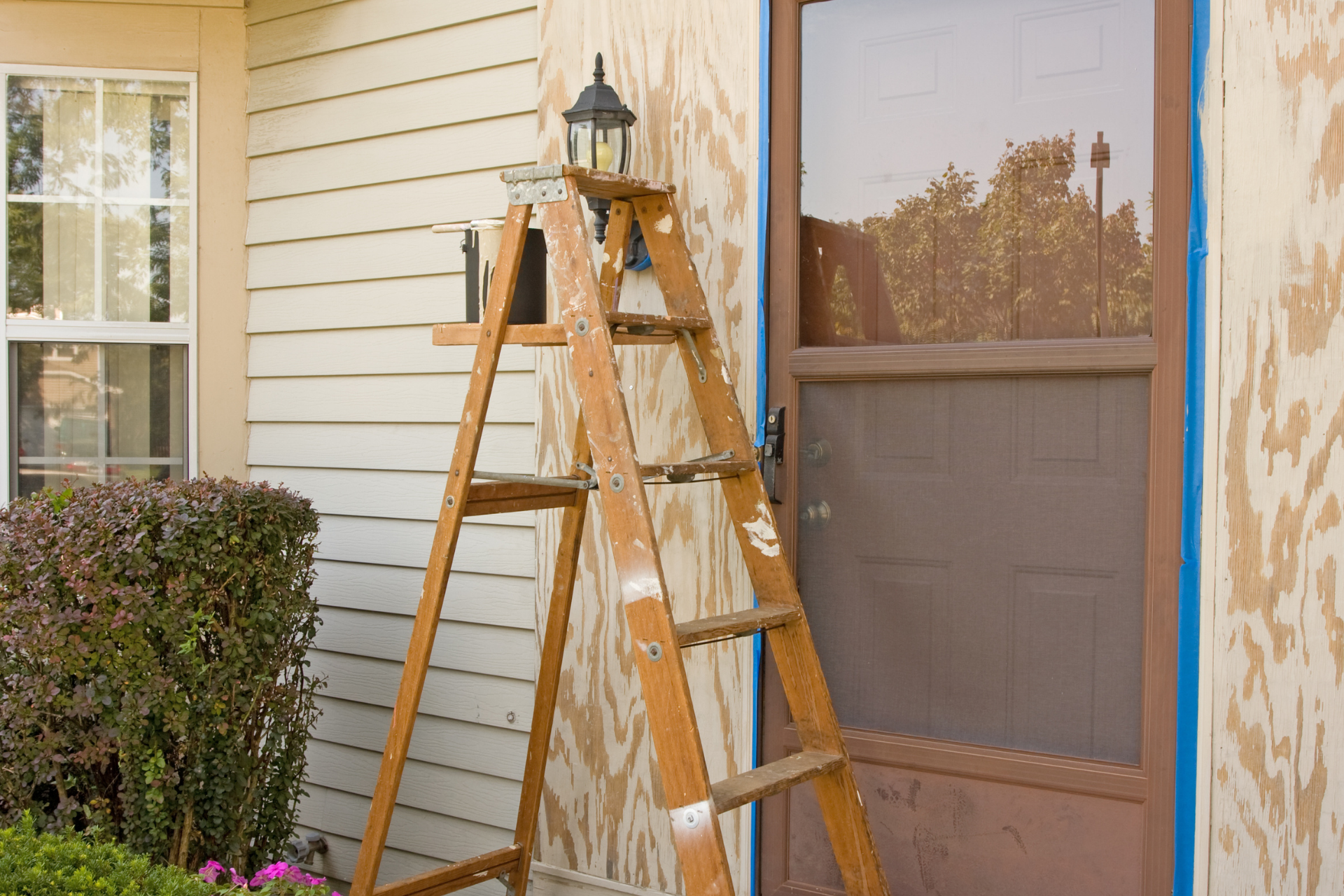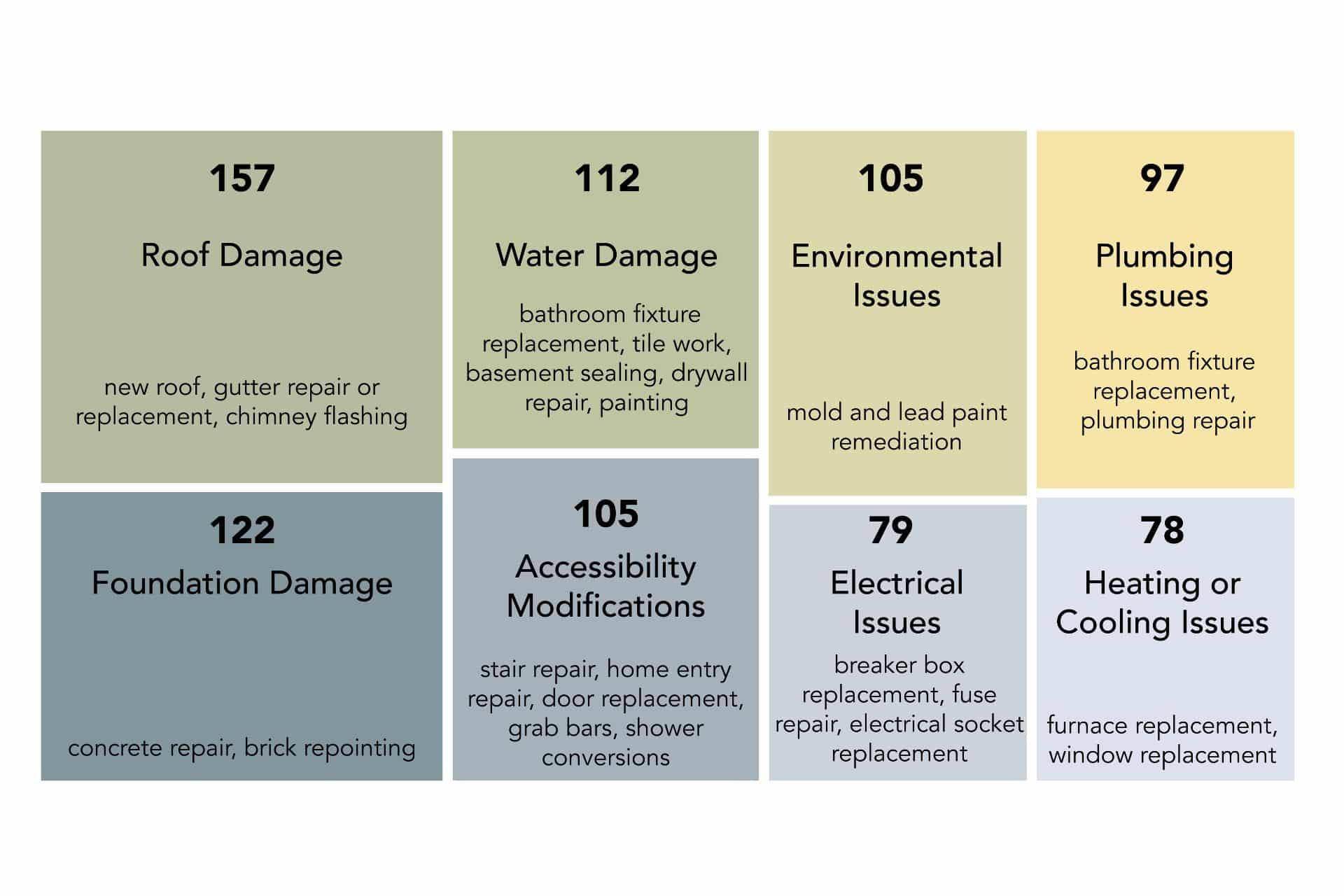Housing Solutions Lab
Helping cities plan, launch, and evaluate equitable housing policies
On this page
The impact of the Whole-Home Repairs Program in Allegheny County, Pennsylvania
September 3, 2025
By Danya Rubenstein-Markiewicz
Overview
In 2023, the Housing Solutions Lab awarded a grant to the Housing Initiative at Penn (HIP) to study ACTION-Housing’s state-funded home repair program in Allegheny County, Pennsylvania. HIP Research Associate Cypress Marrs led the project, in collaboration with Project Coordinator Sarah Curry, Director Rebecca Yae, and Faculty Director Vincent Reina.

Their goal was to paint a nuanced portrait of home repair needs among low-income homeowners in Allegheny and the impact that making needed home repairs had on households’ health, finances, and quality of life. HIP also wanted to document the implementation of Allegheny County’s Whole-Home Repairs (WHR) program, highlighting lessons for future programs.
HIP’s study, titled Repair Needs Among Low-Income Homeowners in Allegheny County, found that low-income homeowners struggled to make critical repairs and linked their unmet repair needs with a host of negative impacts on their finances, mental health, sleep, and ability to host family or friends. The WHR program provided repairs averaging $46,000 per home to 250 homes across the county. Homeowners who received repairs reported lower stress levels and reduced energy bills. In some cases, repairs restored families’ ability to use entire rooms in the winter or allowed their children to play safely in the yard.
HIP found that demand for assistance from the Allegheny County WHR program far outstripped available resources, with the program serving only six percent of applicants during the study period. Most applicants requested help addressing multiple, substantial problems, yet inspections later revealed that homeowners nevertheless tended to underestimate their home’s repair needs. The researchers concluded that “significant, ongoing, and flexible funding will be required to meet needs and regularize program demand over time.”
Background
Across the United States, at least 6.6 million low-income households are living in homes with outstanding repairs totaling $25.3 billion. Homes that, because of their age or quality, may provide greater affordability can also saddle lower-income households with repair needs that they are unable to meet, resulting in respiratory illness and other adverse health outcomes. Particularly for elderly or disabled individuals, homes with unmet repair needs can be inaccessible or dangerous.
Home repair programs are emerging nationwide to remedy this issue. In 2023, Pennsylvania created the statewide Whole-Home Repairs program to distribute $125 million for home repairs that address severe habitability issues, accessibility modifications, weatherization, and energy needs. Allegheny County received $13.3 million in WHR funds. ACTION-Housing, a local nonprofit organization, administered the funds to rehab 250 homes from 2023 to 2024, spending up to $50,000 per household. Eligibility was restricted to low-income homeowners, at or below 80 percent of the area median income (AMI). However, HIP found that a large majority of applicants were even lower-income (70 percent had incomes at or below 50 percent of AMI). ACTION selected households via a weighted lottery and performed inspections, developed work orders, and assigned contractors to each home.
Methods
For the report, HIP analyzed administrative data from ACTION and the Allegheny County Department of Human Services, surveys of WHR applicants, interviews with repair recipients, and details on program administration shared by ACTION.
HIP worked with ACTION to embed a link to an online survey in the WHR program application, and received 303 responses out of a pool of 4,384 applicants in fall 2023. Survey questions focused on housing conditions and their impact on homeowners’ health and quality of life. In 2024, HIP interviewed 20 of the 250 repair recipients to understand their repair needs and barriers to addressing them before receiving assistance, their experience in the WHR program, and the impact of the repairs on their quality of life.
Findings
The research team focused its analysis on the extent and nature of repair needs, the impact of repairs, and the repair program’s implementation. The study does not have a causal research design, and so cannot isolate the effect of repairs on households’ health and other outcomes, but provides rich descriptive and qualitative evidence.
Habitability issues
Researchers found that on average, WHR applicants owned homes built in 1929 and most commonly requested assistance with roof and foundation issues. All inspected homes had at least $35,000 in repair needs, frequently including leaks and cracks, and issues like mold, poor temperature control, peeling paint, and exposed wiring.
Homeowners were deeply affected by these outstanding repairs: survey respondents reported that the condition of their home affected their finances, mental health, social lives, and sleep, among other things, as shown below in Figure 1. About half of the respondents reported that they would not be able to pay for an emergency repair worth $600 or more, and lending data showed that most of the lowest-income homeowners in the county could not access traditional financing to make repairs.
Figure 1. Areas of Life Survey Respondents Reported as Being Negatively Impacted by Outstanding Repair Needs Prior to Receiving Repairs

Source: Housing Initiative at Penn
Data for the figure is available in this spreadsheet
Whole home repairs and impact
Of the 250 households assisted through WHR, 83 percent had incomes below 50 percent of AMI, 41 percent included children, and 14 percent included children with asthma. Nearly 40 percent of households included seniors. The largest share of recipients were Black. The average cost of each project was about $46,000, and most repaired two or more critical systems, including the roof, foundation, and plumbing, as shown in Figure 2.
Figure 2. Repairs Made Through the Whole-Home Repairs Program

Source: Housing Initiative at Penn
Data for the figure is available in this spreadsheet
Homeowners perceived the repairs to have significantly impacted their health and quality of life. About 60 percent of interviewees reported less chronic stress and some reported an increased sense of long-term and generational housing stability. Nearly all interviewees felt that without the program, they would not have been able to make repairs or would have had to make piecemeal repairs over time.
Administering the home repair program
HIP found that the process of making repairs could be challenging. After dispatching contractors to a home, ACTION did not closely oversee the repair process; instead, it held contractors accountable by withholding 10 percent of the contract price, subject to a final inspection. Due to short staffing, ACTION was not always able to perform final inspections in a timely manner, leaving homeowners with little recourse. Program recipients reported difficulty coordinating work timing with contractors and a lack of transparency about why certain repairs were prioritized over others. HIP found that projects with greater ACTION involvement tended to go more smoothly.
Relevance
HIP’s study of the Allegheny County WHR program underlines the need for and the benefits of home repair programs. One key finding is that homeowners often have difficulty assessing the full extent of their home’s repair needs. This suggests that estimates of repair needs, which are often based on self-reported measures such as results from the American Housing Survey, are likely underestimated.
The study also generated insights for designing home repair interventions. It pointed to a strong need for mediation between contractors and homeowners throughout the repair process. Strong project management and effective communication about repair priorities are necessary to ensure the homeowner is satisfied and the contractor provides quality work. But most importantly, programs require ongoing investment to build economies of scale and effectively meet the vast need for home repairs.
For questions about this research, contact the Housing Initiative at Penn.
Contact the Housing Solutions Lab team at Ask the Lab for support on how your city can establish a home repair program.